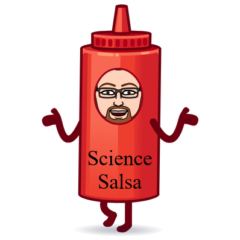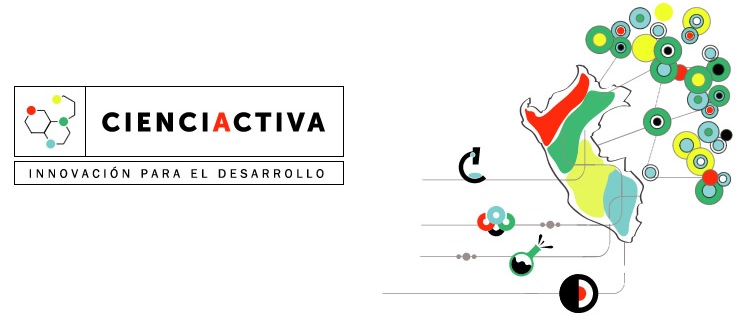When is time to replace the calendar hanging in the kitchen I always do things I am not very keen on doing, but they come with the season. As sure as I will unwillingly write checks with the wrong date during January, I am now looking at my science posts statistics from 2015.
I am sharing with you the posts that reached more people during 2015, thanks to your shares and your likes. It confirms what I already know, that we all love Ed Yong’s writing. But also surprisingly that a lot of very technical stories make it to the top ten (two of them in science communication). My own writing made it to the top of the list. This confirms that you are a good friend, always happy to read and share my writing. I am very grateful for your kindness and support.
I propose a toast: To many more great science stories for years to come!
Most shared and liked Facebook’s Science Salsa stories in 2015:
1Toy Sharks to Face Your Fears: A #STEM Like Me Story. |
“When I first met her, she seemed to be looking at STEM with skepticism, maybe a little fear, like somebody that is staring at the rough sea from the shore.”by IVAN F. GONZALEZ |
2Let’s See Matt Damon Drive His Mars Rover Over THIS |
“Martian dunes are jaw-droppingly beautiful.”by PHIL PLAIT |
3Why Don’t We Know the Age of the New Ancient Human, Homo Naledi? |
“The simple answer is: Because dating fossils is really difficult. Scientific papers and news reports about new fossils so regularly come with estimates of age that it’s easy forget how hard-won such data can be.”by ED YONG |
4New Algorithm reduces size of data sets while preserving their mathematical properties |
“One way to make big-data analysis computationally practical is to reduce the size of data tables—or matrices, to use the mathematical term—by leaving out a bunch of rows. The trick is that the remaining rows have to be in some sense representative of the ones that were omitted […]”by LARRY HARDESTY
|
5How sketching can enhance your science conference experience |
Visual note taking (aka “sketchnoting”) isn’t just for artists.by BETHANN G. MERKLE |
6What happens when you give scientists comedy improv lessons?
|
“Improv is something you expect to find on Saturday Night Live, not in the science lab. A couple of acting teachers, however, are beginning to introduce improv acting and communication techniques to the science syllabus. “by ELIZABETH SHOCKMAN |
7A Fossil Snake With Four Legs |
“And then, if my jaw hadn’t already dropped enough, it dropped right to the floor,” says Martill. The little creature had a pair of hind legs. “I thought: bloody hell! And I looked closer and the little label said: Unknown fossil. Understatement!”by ED YONG |
8Scientists Finally Decide Which Bit of This Weird Animal is the Head |
“In 1977, British palaeontologist Simon Conway-Morris discovered the fossil of a truly weird animal, which he named Hallucigenia because of its “bizarre and dream-like quality”. He wasn’t kidding. The creature was so strange that it took fourteen years for scientists to work out which way up it stood. And now, nearly four decades after its original discovery, we finally know—clearly and conclusively—which end is the head”by ED YONG |
9Mars has flowing rivers of briny water |
“Salty or “briny” water melts more readily than regular water, and the salts found in these flowing streaks could lower the freezing point of this Martian water to a temperature range seen during the summer.”by NSIKAN AKPAN |
10Red Crabs Invade San Diego Shores |
Stranding may have been related with warmer waters or toxins.By MARIO AGUILERA |
11Quantum-dot spectrometer is small enough to function within a smartphone |
“If incorporated into small handheld devices, this type of spectrometer could be used to diagnose skin conditions or analyze urine samples, Bao says. They could also be used to track vital signs such as pulse and oxygen level, or to measure exposure to different frequencies of ultraviolet light, which vary greatly in their ability to damage skin.”by ANNE TRAFTON |
12How to Program One of the Gut’s Most Common Microbes |
“If you want to turn a microbe into a gut ranger, you’re better off starting with a species that’s well-adapted there. And there are few better choices than Bacteroides thetaiotamicron—B-theta to its friends”by ED YONG |
13Diagnosing Diseases with Origami Microscopes |
“While Foldscopes used for diagnostic testing come pre-folded to ensure high quality control, the ones sent out for educational purposes through the Ten Thousand Microscope Project are folded and built by the users. He hopes that school children, hackers, and tinkerers all over the world will build on and add to the microscopes. While Prakash isn’t quite dropping these Foldscopes from airplanes, he’s certainly getting them into the hands of children all around the world.”by LAUREN FARRAR |
14Scientists are developing a shield to protect astronauts from cosmic radiation |
“The technology is pretty much essential if we want astronauts to safely spend any significant amount of time in space. In addition to causing potential cognitive decline, it’s believed that prolonged exposure to cosmic rays may increase the likelihood of astronauts developing various types of cancers.”by PETER DOCKRILL |
1516 on-point responses from female scientists to Nobel winner’s sexist comments |
“How do you respond to sexist comments if you’re a female scientist who has been told that you should be in a single-sex lab because male scientists might fall in love with you? You mock them on Twitter, of course.”by BLATHNAID HEALY |
16400-Year-Old Arctic Plants Frozen by Glaciers Come Back From the Dead |
“The findings, which were presented at a National Academy of Sciences meeting, gives researchers a clue about how ecosystems survive cyclical ice ages. A host of other plants, some never before seen by modern scientists, are emerging from the shadows as well – including cyanobacteria and green terrestrial algae.”by TAFLINE LAYLIN |
17How a Jellyfish-Obsessed Engineer Upended Our Understanding of Swimming |
“With an engineer’s hubris, I thought they’d be simple,” he recalls. They jet forwards by contracting their umbrella-shaped bells and pushing water towards their tentacles. They were, quite literally, not rocket science. He soon realized that he was wrong.By ED YONG |
18Why Scientists Are Upset About The Facebook Filter Bubble Study |
“The study’s conclusion discusses how a person is more likely to click on and like stories that support their own beliefs, which means people tend to create their own filter bubbles. That’s true, but it’s not the point—the point is that the news feed algorithm also filters out diverse opinions. As Tufekci says, it is disingenuous of the researchers to change the focus of their paper. […]”By DAVID LUMB |
19Beards are not dirtier than clean shave: Germ phobia debunked by a microbiologist. |
“Your Beard Is Covered in Bacteria. So is everything else. Don’t fall for the latest viral freak-out.”By DAVID COIL |
20Inspiring Illustrations of Awesome Female Scientists |
“While women in science and math are still underrepresented in popular culture, artists like Rachel Ignotofsky […] are inspired by them and want to remind others of their essential place in our history.”by ALISON NASTASI |
21Dinosaur Feathers Discovered in Canadian Amber |
“Some of these feathers strongly resemble those of diving water birds today (and the researchers include one example of a modern diving bird feather so you can compare them). Other structures, however, look nothing like feathers of today”by ANNALEE NEWITZ |


























